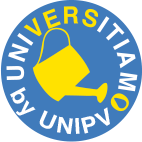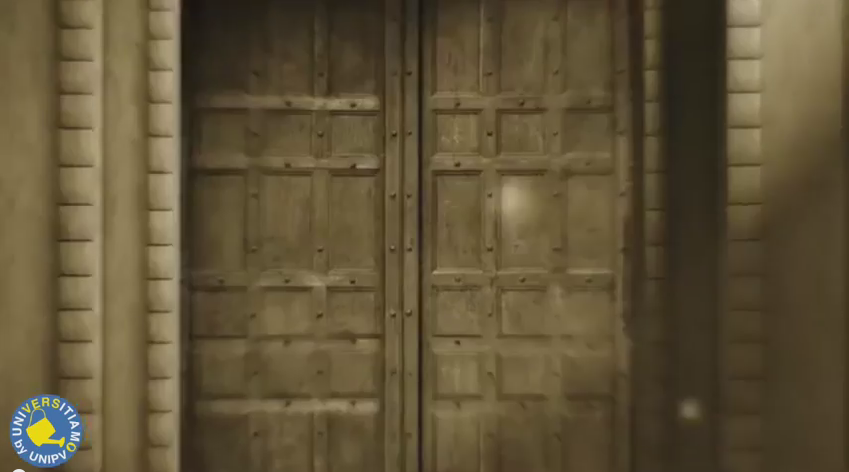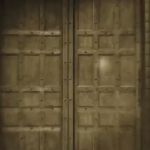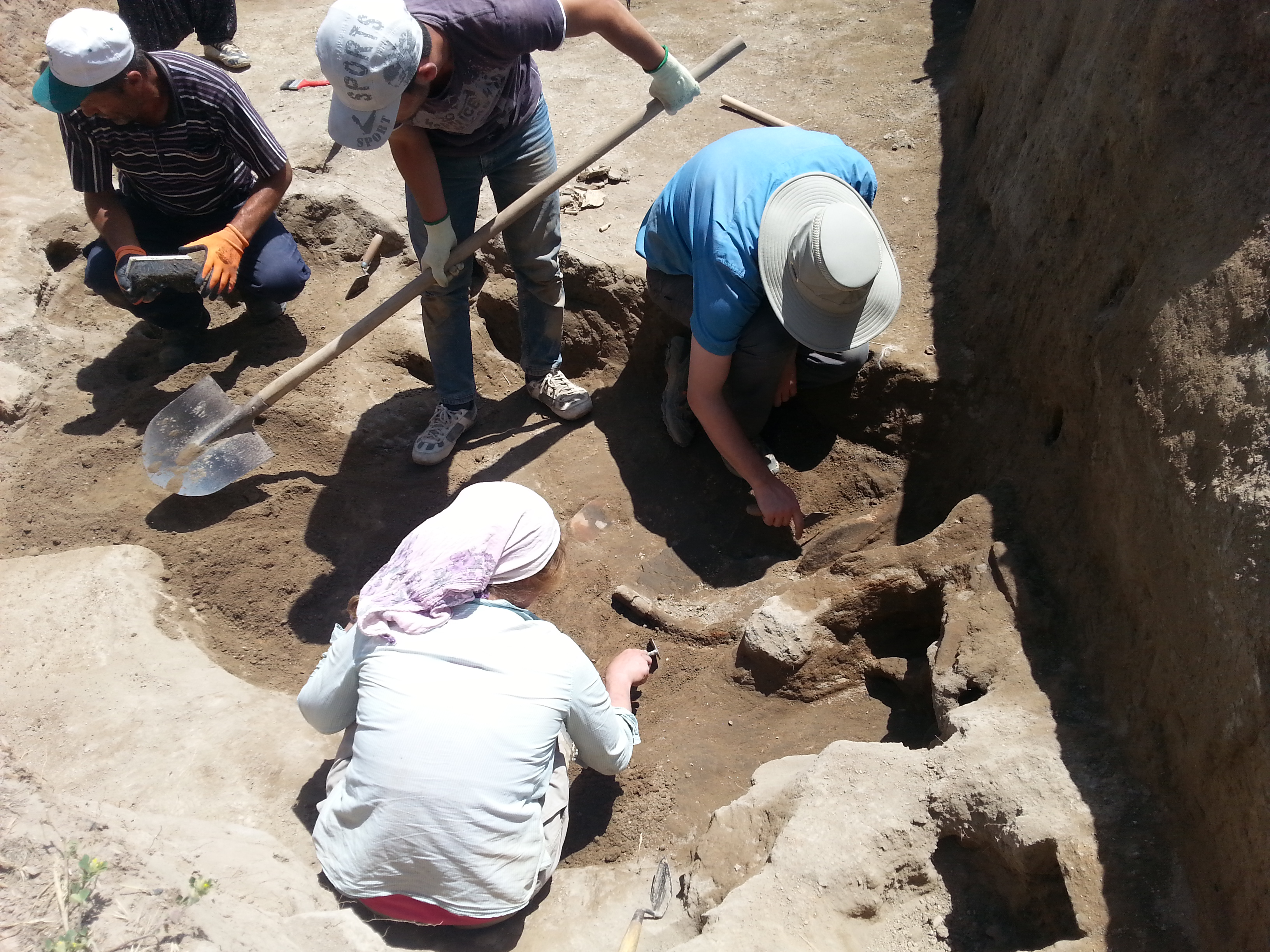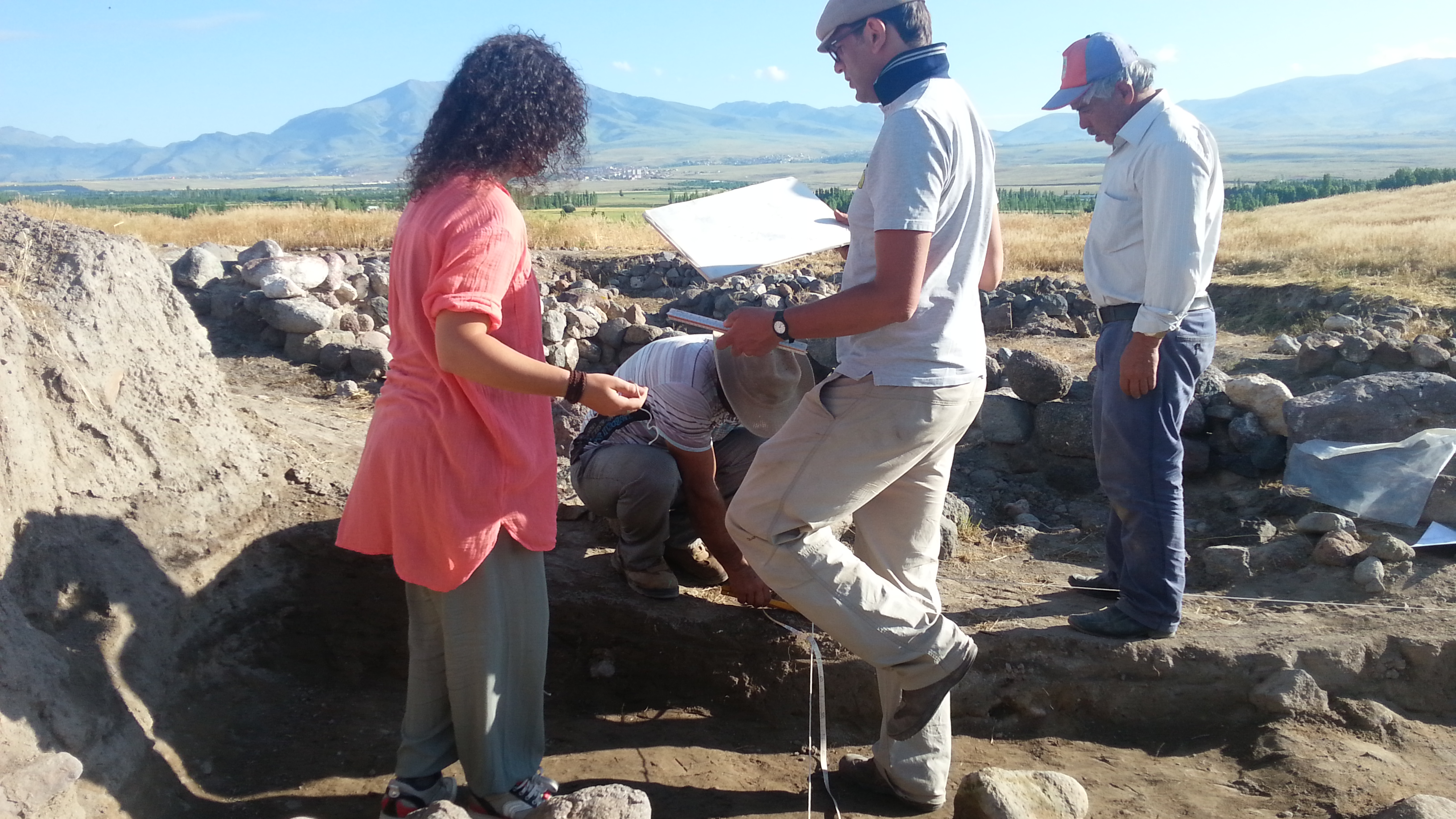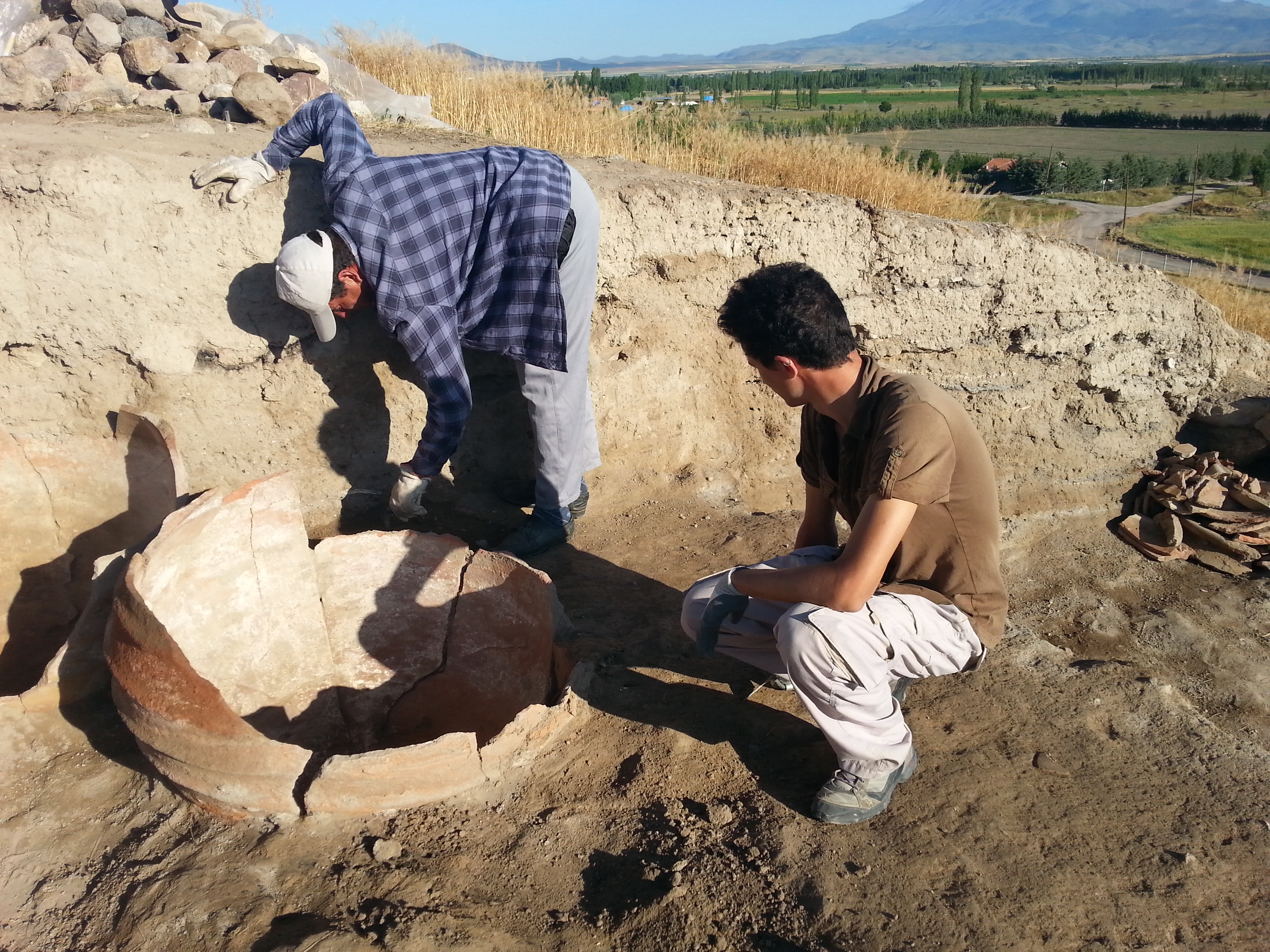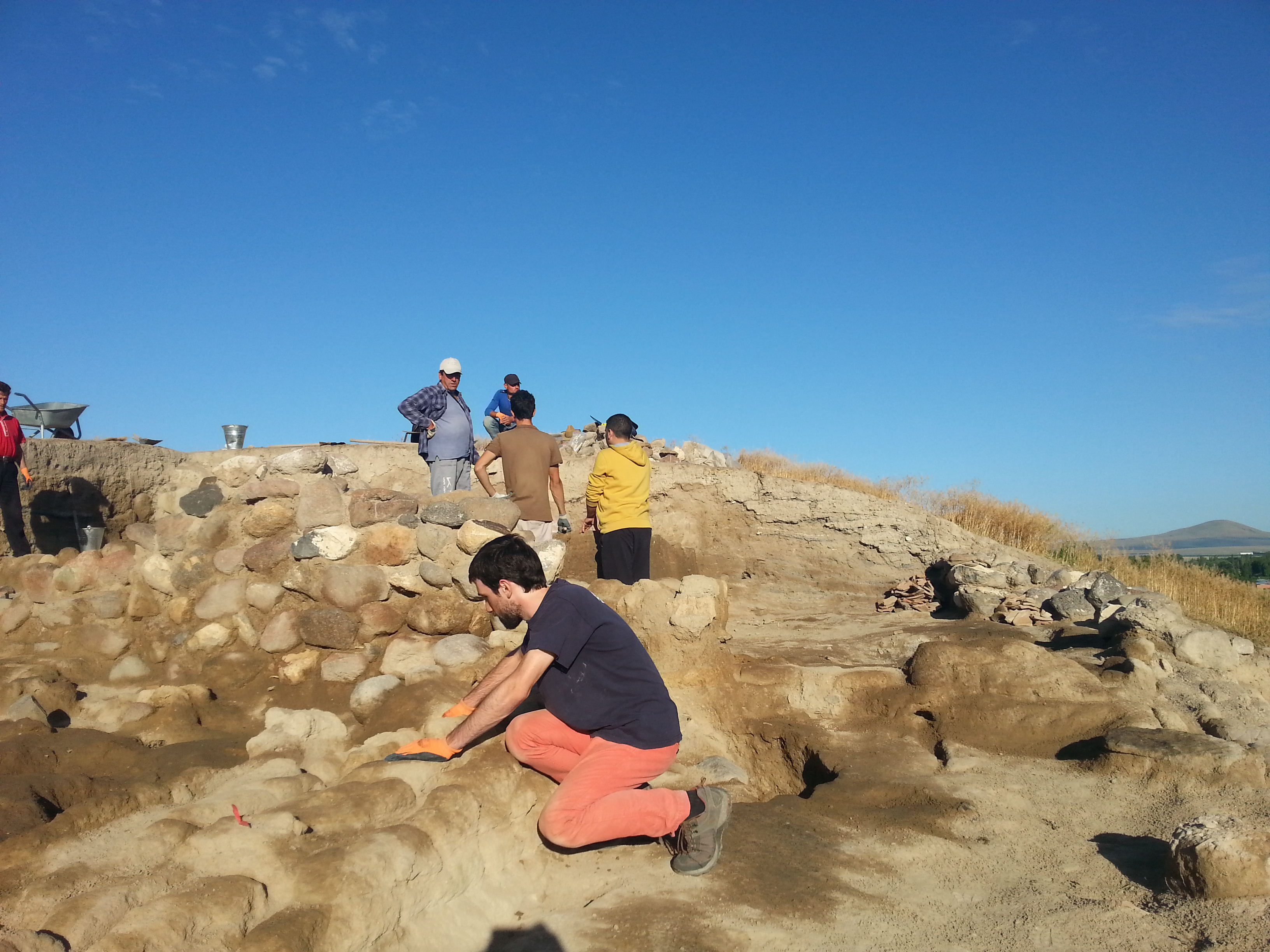The project
Since 2011 our archaeological mission, in collaboration with New York University, is bringing to light in Cappadocia (Turkey) a huge city until a few years ago completely unknown to scholars and the public. Kınık Höyük, populated from about 3000 to 50 BC, was roughly the same size of Troy – Hisarlik. Two operations opened in recent years have focused their attention on the fortifications of the acropolis hidden under a hill in the center of the site.
A geophysical survey conducted in 2010 confirmed the evidence previously collected and allowed us to locate the best-preserved remains: a wall about 5 m thick, preserved for more than 13 m below the ground. Following the first four excavations it was possible to clarify that the walls were built around the middle of the second millennium BC and they stood defending the city until the Persian time (about 350 BC). At first it was thought that a depression along the northern slopes hid the gate, but it was later discovered that the depression was caused by the removal of material which was used, during the Hellenistic period, by the last inhabitants of the city to build their homes on top of the hill.
The search for the gate, therefore, continues. The geomagnetic survey had shown, on the southern slopes of the hill, the presence of a section of the wall, which is much thicker. We now want to start a new excavation in search of the gate of the citadel in this thicker section of the wall.
But why is it so important to find the door? Often in this region the gate to ancient cities were decorated with statues and stone slabs carved with figures of lions, warriors, gods or composite beings (and animals with human traits) placed to defend access to the city. Often next to the reliefs we find inscriptions in Anatolian hieroglyphs – a particular form of writing which was born in the second millennium BC – that narrate the exploits of the local princes and the wealth of their territory. Many Preclassical bastions have been brought to light in the late nineteenth and early twentieth century in Turkey and northern Syria. In general, however, they were removed after the discovery and placed in museums in Ankara and Istanbul, and even as far as Pergamon Museum in Berlin, therefore they can no longer be visited in their original location.
The discovery of a new city gate would be of great scientific importance, not only for its artistic and monumental possible value; a similar discovery, as those of the nineteenth and twentieth century, made nowadays would allow us to analyze the structure using modern tools and technology not available 80 or 100 years ago, and to study the relationship between the inner city and the surrounding area, where important rock reliefs and steles dating to the same period of the walls have been found.
Our mission therefore requires collaboration to cover at least part of the expenses necessary for this purpose.
LINK
Goals
Funding required: € 15,000, divided as follows:
8000 €
Workers and guardian of the site payment
2000 €
Technical archaeologist specialized (to follow the process)
2000 €
scientific analysis (C14 in particular)
3000 €
safety, restoration and enhancement of the sections of walls and related structures
Video
Media Gallery
Rewards
Donations starting from 500 euros
mentions in the official publications and on the official website of the excavation (www.kinikhoyuk.org)
Donations starting from 50 euros
personal invitation to official presentations on videoconference of the results
For every donators who wants to be contacted: sending of illustrative materials (e-mail)
Team
Clelia Mora
Prof.Clelia Mora
Prof.
Professor of Ancient Near Eastern History, Department of Humanities, University of Pavia
Lorenzo d’Alfonso
Prof.Lorenzo d’Alfonso
Prof.Assistant Professor of Western Asian Archaeology and History, Institute for the Study of the Ancient World, New York University
Link CVPam Crabtree
Prof.Pam Crabtree
Prof.M. Elena Gorrini
Prof.M. Elena Gorrini
Prof.Assistant Professor of Classical Archaeology, Department of Humanities, University of Pavia
Link CVM. Elena Balza
PhDM. Elena Balza
PhDAssegnista di ricerca – Anatolistica, Univ. di Pavia
Backers
-
Catherine Humblet
-
luca maraschini
-
emilo maraschini
-
Anonymous
-
Dott. Ernesto Marelli Direttore Banca Albertini
-
Anonymous
-
Anonymous
-
Anonymous
-
Camilla
-
Anonymous
-
Lauretta Favaretto
-
Giuliana Jona
-
PAOLA FAVARETTO
-
Matteo Fabbrini
-
gino benza
-
Paola Morra
-
Gisella Segagni Lusignani
-
Dario Mantovani
-
Anonymous
-
elena
-
Giovambattista Ferrara
-
Anonymous
-
Anonymous
-
Anonymous
-
Anonymous
-
Anonymous
-
Anonymous
-
Tomassini Pieri Alberto Giulia
-
Anonymous
-
Giorgio Mantero Ernesto Marelli direttore Banca Albertini
-
Pierangelo Valtinoni, Piva Ale Ernesto Marelli direttore Banca Albertini
-
Caterina Antonelli Ernesto Marelli direttore Banca Albertini
-
Roberto Mortari Ernesto Marelli direttore Banca Albertini
-
Diego Matessi
-
Marco De Pietri
-
Andreina Guglielmino
-
Giampietro Berti
-
anna maria bassetto
-
Pippo Ranci
-
Rosalba Guglielmino e Carlo Matessi Guglielmino e Carlo Matessi
-
Andrea Matessi
-
Gosia & Peter Edwards
-
Anonymous
-
Fabio Allegreni
-
Anonymous
-
Diego Navati


